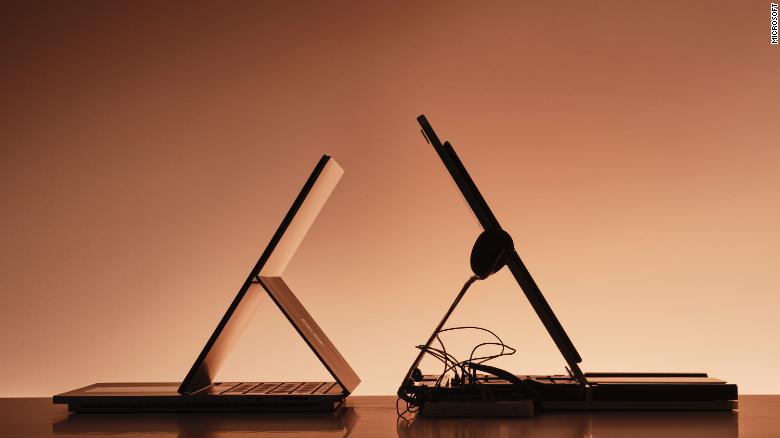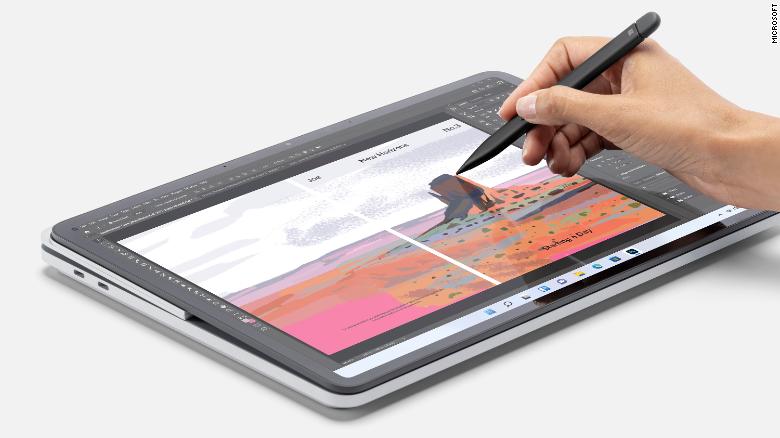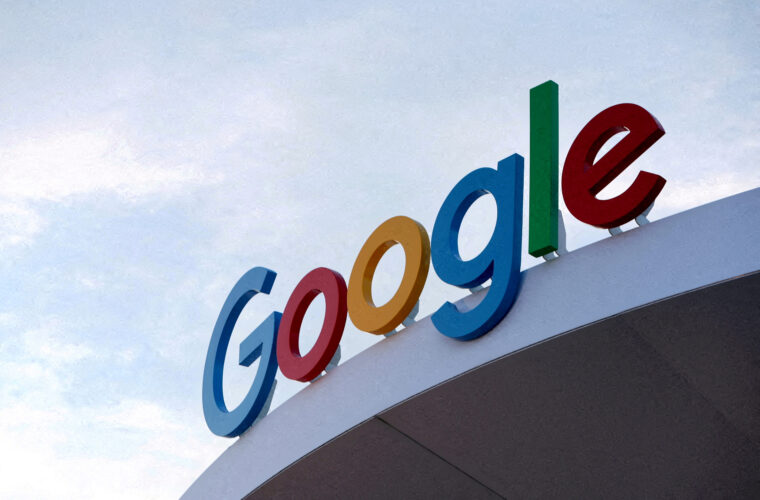Across the Atlantic they call it with a scary name, Frankenstein. Yet the Surface Laptop Studio, unveiled by Microsoft at the end of September, is anything but a monster. Based on the Windows 11 platform, it features a 14.4-inch PixelSense Flow display with a 3:2 aspect ratio, Dolby Vision support, 2400×1600 pixel resolution and 120 Hz refresh rate. It is obviously a touch panel, which ensures full compatibility with the new Surface Slim Pen 2 stylus for drawing and freehand writing. There are three modes of use: Laptop, Stage and Studio, with the ability to easily switch between them thanks to a specially designed hinge. Thunderbolt 4 technology is integrated into two USB 4 ports on the sides, which are useful for connecting external monitors with up to 4K resolution. Computing power is provided by eleventh-generation Intel Core processors (Core H35 i5-11300H or H35 i7-11370H) flanked by dedicated GPUs (Iris Xe or NVIDIA RTX 3050 Ti), 16 or 32 GB of RAM GB LPDDR4x and SSD drives from 256 GB to 2 TB. In short, a ‘monster’ yes, but a performance one. Behind its development, however, there is a particular story.
In the middle of the pandemic
In March 2020, Microsoft closes its Redmond office because of the pandemic. Employees take what they can with them. Some engineers and computer designers have the opportunity to use Frankenstein, a prototype of a versatile, convertible laptop computer designed for Windows 11, the first major software update in six years, at home. The idea was to finalize Frankenstein by the end of 2020, and then sell it in the middle of the following year. However, the device was far from finished: from the hinge to the keyboard, mouse and sensors, there was still a lot of work to be done.

With the lab temporarily closed, the team had to find other solutions. On top of that, the shortage of chips and hardware, partly due to the lack of silicon, a key element for processors, made the matter even more difficult. The inability to closely monitor suppliers in China made the transformation from duckling to swan very complicated. “We had team members in the factory who had to wear HoloLens mixed reality viewers, otherwise we would have been there ourselves to troubleshoot in real time,” Angela Kruskov, Microsoft’s chief engineer told CNN. “We couldn’t go there, and we still can’t, so it was one of the solutions that helped us in the process.”
Satisfying everyone
A year and a half later, Surface Laptop Studio appeared. More than a swan, what Microsoft pulled out of the hat at the end of September can be labelled ‘chameleon-like’. Computer, tablet, multimedia device, gaming console, a device that targets professional developers and creators, consumers to whom Microsoft wants to show its ability to offer something truly innovative. Studio’s goal is to fuse the power of a desktop computer with the portability of a laptop. And some of the best parts of Surface Laptop Studio are in the details: the hinge protuberance is small, something the design team says required careful precision to get right. The second-generation Surface Slim Pen sits neatly under the keyboard, loads inside, and vibrates through your fingertips when in use, as if you were using a real pencil. The arrangement of elements on the display adapts depending on the mode you use, thanks also to Windows 11, which has undergone a massive design overhaul and features new multitasking tools.

Microsoft’s Surface line still lags behind Apple’s competition, but it has made great strides in recent years. “Its innovation on removable keyboards, displays and all-in-one designs has created new segments that rivals have followed,” said Geoff Blaber, CEO of market research firm CCS Insight. “But the challenge for Microsoft is to go beyond its productivity focus and convince consumers that it has more to offer.” When the Surface Laptop Studio team was inoculated and the limits lifted, work in the office resumed, albeit at a slower pace. Now the giant has to deal with the still evident shortage of hardware, so much so that the product launch in the US has already put supplies in crisis. And imagine what will happen when the Surface arrives in Europe, where millions of consumers are waiting for it. Panos Panay, Microsoft’s chief product officer, said: “This is a real problem for us – we work on it every single day. I’m worried it’s going to run out and we can’t satisfy all consumers. But we are building as many as we can”.



